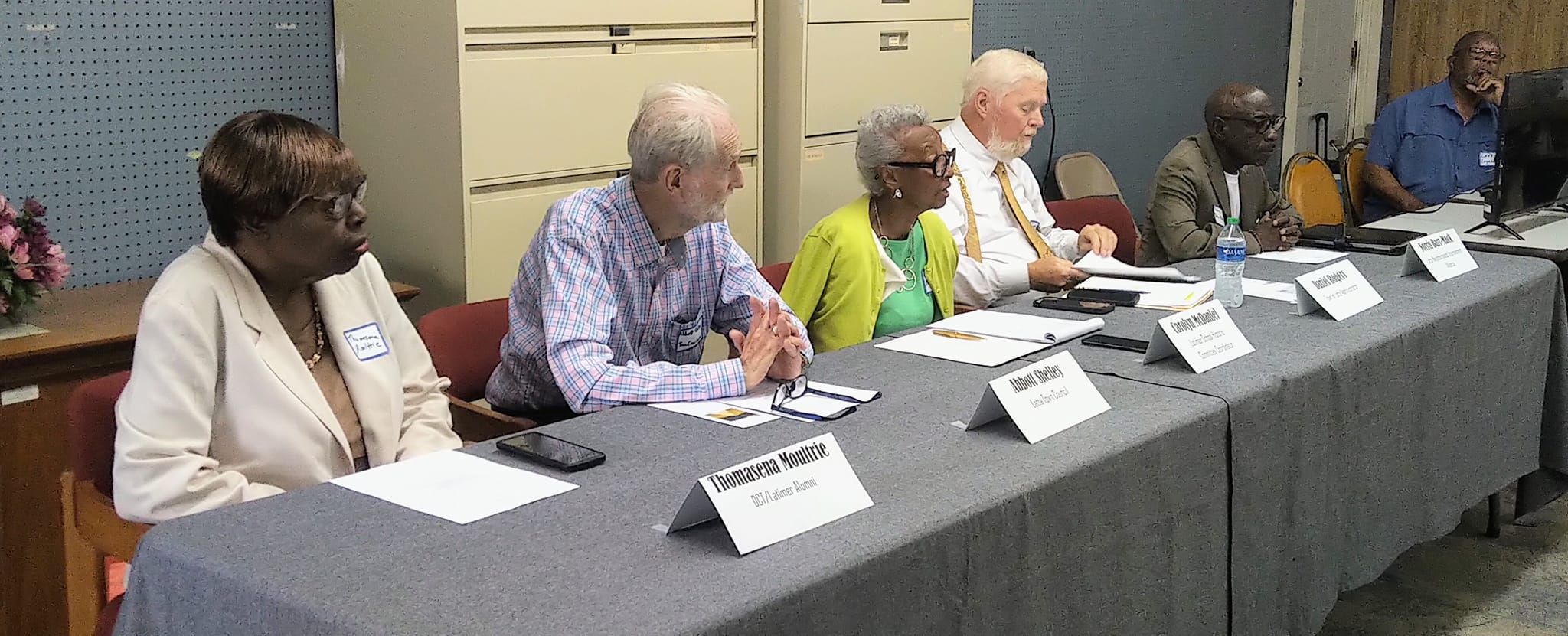The Latimer School has been put on the National Historic Register as of mid-May.
At a Latimer School Historic Committee Alumni Meeting, Carolyn McDaniel, who is heading the group, said that she moved back in 2016 and noticed that the Latimer School was going down. She said that although CareSouth is there, sections of the school have not been taken care of. She said this school is part of the African-American heritage in the community. She said she has expressed to the town council that she felt like the African-American heritage was not being honored. She said this historic building could be fixed.
McDaniel said Latimer was an equalization school built in the 1950s. She said for segregation to continue this school was built to keep the students separate but equal.
Thomasena Moultrie of the DCT Latimer Association and a 1969 graduate said she wanted to preserve what they had there and talked about how she enjoyed her time there. This is one reason she wants to be part of this effort.
Town Administrator Daniel Rogers, Latta Town Councilman Abbott Shelley, and Norris Barr Mack of the Latta Neighborhoods Improvement Alliance were also part of the discussion.
The group would like to see Latimer become a place for community meetings and activities once again.

History
Here is a brief history of the Latimer Schools as detailed in a brochure that was given out at the meeing:
The history of the Latimer Schools is deeply intertwined with the evolution of educational facilities for colored children in Dillon County. These schools were established over a century ago and their transformation reflects the societal shifts and educational reforms of their times. From humble beginnings at an Odd Fellow’s Hall to subsequent relocations and expansions the Latimer Schools’ journey is a testament to resilience, adaptation, and progress.
In 1889, the first school for colored children in Latta, opened in the Old Fellow’s Hall on Washington Street with Cardinal Chaplin as its inaugural teacher. As the school grew, it outgrew its original location, prompting a move to Willis Street, where a two-room building was erected.
Under the leadership of A.B. Bethea (1898-1902) and later A.W. Bethea, Jr. (1915-1917), significant improvements were made. The old three-room building was transforme into a two-story structure with five classrooms on the first floor and a future auditorium classroom on the second floor. Manual training, home economics, and agriculture were introduced, reflecting the changing educational landscape.
Between 1917 and 1925, Mr Bartel and Mr. Barcoats served as principals. From 1928 to 1937, Mr. Holman served as principal of the Dillon County Training School. Under their administration, many new improvements were made, but in spite of it all that was accomplished, the schools were not equal facilities.
A new Rosenwald grammar school was erected with eight classrooms and an auditorium, the only such building for colored children at that time. After Mr. J.A. Holman, Mr. R.M. Wilkinson became principal and served for several years. The eighteen Rosenwald schools throughout Dillon County’s black communities made many great strides as they strengthened their own schools and fought against segregated education.
The Latimer Schools also weathered the storm of desegregation and legal challenges, adapting to societal changes while maintaining their commitment toe ducation. Today, their legacy stands as a testament to the enduring spirit of progress and the importance of education in shaping communities.
The Last 30+ Years
The Dillon County Training School and Latimer Schools achieved remarkable success in basketball and baseball. In 1992, a significant transition occurred when Latimer School was renamed Latta Elementary School. Although the era of Dillon County Training Center/Latimer School has ended, its memories linger.
Thre is no tangible evidence to remind future generation of where their forebearers studied, yet the legacy lives on through the thousands who walked its halls, each carrying forward a piece of its history into diverse professions and careers. William Cowper’s words resonate deeply, “Whate peaceful hours I once enjoyed, how sweet the memory still, but they have left an aching void, the world can never fill.”
Today, the former Latimer Schools serve as an Urgent Care Clinic, Pharmacy, Chiropractor office, Home Health Care, and Community Gymnasium.
Want to Join the Effort?
The Latimer School Historic Committee meets on the third Tuesday of each month at 4:00 p.m. at the Latta Art Center, across from the Latta Town Hall.
Donations Welcome
To donate to the Latimer School Historic Project, please make checks payable to DCT/Latimer Revitalization and mail it to: Latimer School Historic Project, P.O. Box 747, Latta, S.C. 29565.







